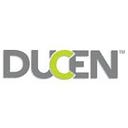Sales are still firmly entrenched in the last century with techniques such as cold calling, foot-in-the-door, pitching, and solution-selling across most industries. What if we told you there was a better way to find prospects, predict their behavior, and close deals?
With predictive analytics, you can use data gathered from any number of internal and external sources along with advanced algorithms to find actionable insights into prospect needs, industry trends, and competitor behavior.
You can combine and analyze data from historical purchases, website and email interactions, locations, demographics, and your CRM to get an accurate sales forecast, predict who is most likely to buy your services, provide targeted discounts, and improve your pricing.
Figure 1: Promotional Analysis
Boost your sales with Predictive Analytics
1. Accurate sales forecasts
Sales forecasting looks at past performance, industry characteristics, competitive information, and economic trends to predict future sales. With predictive analytics, sales forecasting can be improved from the industry standard of 60–70% to well over 80%.
To accomplish this, you must select a forecasting model based on your specific business requirements and train it with the right data.
In the example below, the ARIMA model is used to predict sales for a pharmaceutical company. The ARIMA model is often used to predict seasonal sales patterns, the number of incoming customers, and customer churn.
Figure 2: ARIMA Predictive Analytics/Forecasting Model
The model utilized data from different sources, including competitor intelligence, trends, past performance, and typical customer behavior. To demonstrate the result that you are likely to see: In this example, the accuracy of the sales forecast was improved from 60% to 89%.
2. Predict likelihood to buy
Would you like to have real, actionable insights into who is likely to buy your products and services either as first-time buyers or repeat customers?
With predictive analytics, you can apply a model that analyzes customer data, including past sales, customer interactions with your emails and websites, demographics, location, and other information to predict the likelihood of a prospect purchasing your product or service.
The model compares the pre-purchase behavior of potential buyers to the behavior of your other customers to see which prospects behave most like your previous buyers. With this information, prospects can be categorized and tagged based on their likelihood to purchase your product or service.
Your sales and marketing can then customize the way they interact with these prospects to increase the likelihood of closing the deal. For example, they can target specific customers with personalized product combinations, value-added services, discounts, and other informed sales tactics.
Related: Kickstart pharma sales performance with Advanced Analytics
3. Targeted discounts
Everyone loves a discount. However, applying poorly targeted or blanket discounts can greatly lower your profit margins with little return on investment on your marketing campaigns.
Whether your company is B2C or B2B, predictive analytics can be used to look at past and current data to see if one discount level is likely to lead to more sales than a different discount level (e.g. 20% vs 10%). Predictive analytics can also be used to look at different demographics, locations, and types of customers to see which discounts have the highest conversion rates.
Using information from the likelihood to buy models described previously, you can also target customer with a high likelihood to buy with lower discounts (but other less costly perks to keep them happy) and ones with lower likelihood to buy with higher discounts. This can lead to higher profit margins from those who are likely to buy and better conversion rates for those who are less likely to buy.
4. Improved pricing
By gathering data from your competitors, market conditions, past sales, internal costing, customer behavior, and many other sources, you can discover:
- What pricing and discounts are most likely to result in sales and lead conversions
- How you can apply dynamic changes in pricing to improve overall revenue and profitability
- Where your market is going and whether your pricing is likely to remain competitive
- Hidden costs, product and service issues, and profit opportunities
- Which value-added services and product combinations are likely to lead to sales, upsells, and customer retention
Want to see how you can boost your sales with predictive analytics? Check out Analance today.
Originally published at http://blog.ducenit.com.
